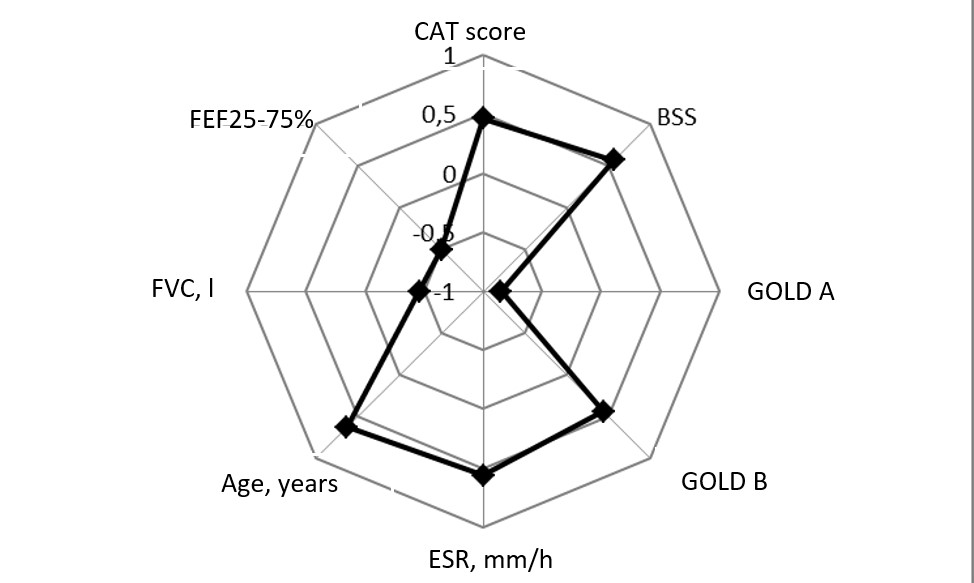Abstract
Systemic effects, including respiratory muscle weakness and systemic inflammation, characterize COPD.
Aim: to study the effect of magnetic stimulation of the paravertebral ganglia, which innervate the respiratory muscles, on the level of anti-inflammatory reserves of the patients.
64 patients with COPD (GOLD II-III) were divided into 2 groups: 1st (36 pts) received standard COPD treatment, 2nd (28 pts) in addition to it received high-intensity magnetic stimulation of the thoracic paravertebral ganglia, which was conducted daily for 10 minutes (treatment was 10 sessions), 1-2 T, 0.1-0.3 Hz. The groups were comparable in clinical and functional characteristics. Anti-inflammatory reserves were investigated using serum lipoxin A4 (LXA4) via the ELISA method.
The mean increase in the LXA4 level after treatment was 0.008 ± 0.046 in group 1 and 0.161 ± 0.138 ng/ml in group 2, p<0.01. The factors that were linked with the LXA4 level obtained after the treatment are shown in Figure 1.
ESR - erythrocyte sedimentation rate, BSS - Bronchitis Severity Scale.
Also, the most significant LXA4 increase (0.426±0.264 ng/ml) was observed in younger patients - up to 45 years, p<0.01.
Conclusions. Higher levels of anti-inflammatory mediators after the treatment can be expected in COPD patients younger than 45 years old, who belong to COPD group "B", who have high scores on the bronchitis severity scale and CAT.